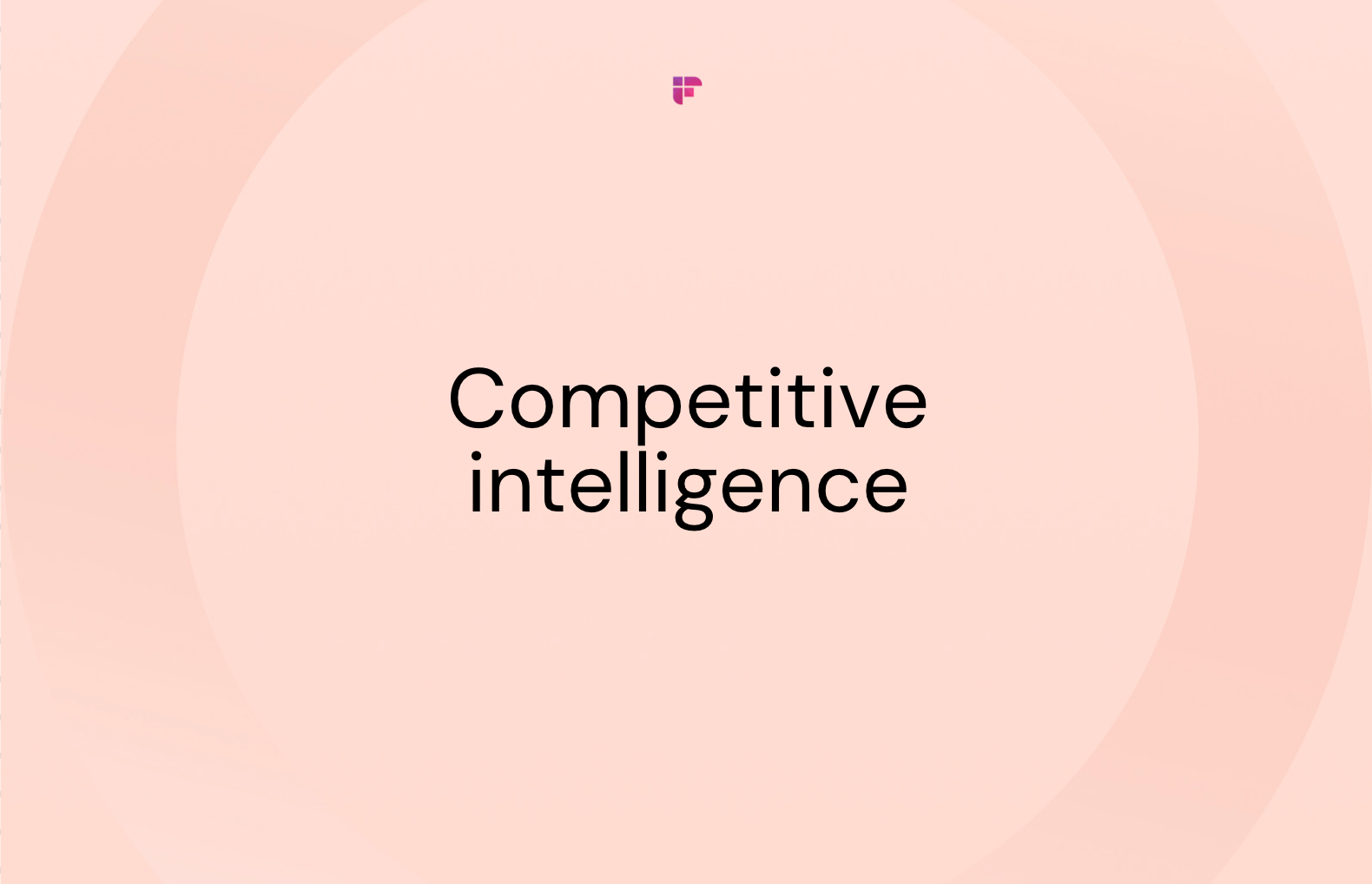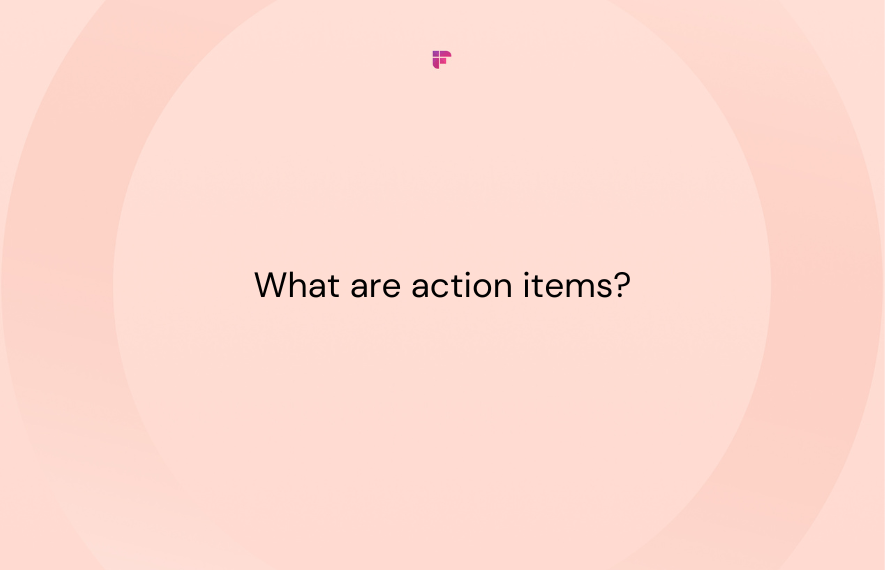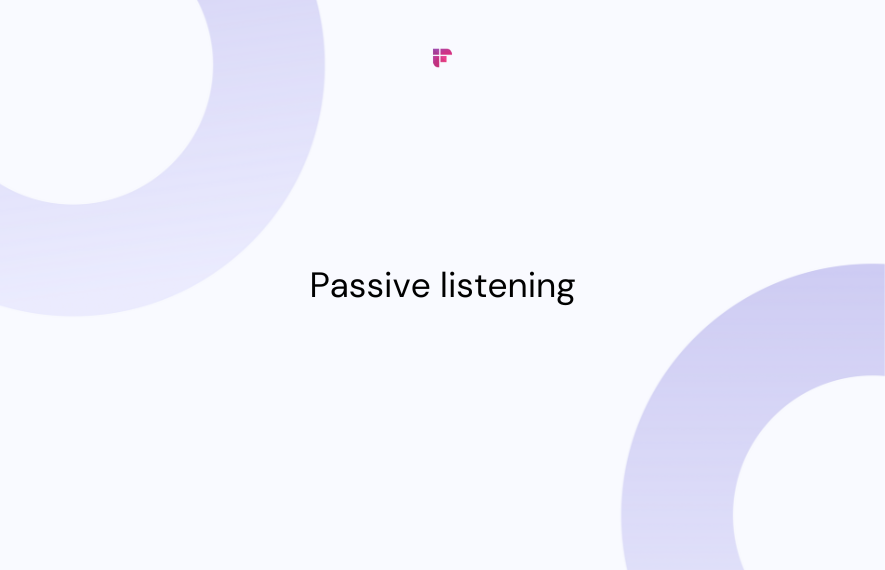Competitive intelligence is transforming business practices across the globe.
As the competitive landscape changes, it is easier than ever for a new competitor to enter the market, adjust marketing messaging, release new product features, or expand into new markets.
The need for competitive intelligence has never been greater, and here are two abiding facts about the market as of in 2021:
- CI teams are growing: more than half (57%) of businesses have CI teams of two or more dedicated CI professionals, compared to just 37% of businesses two years ago.
- Competition continues to heat up: 90% of businesses report that their industry has become more competitive in the last three years.
As tech and automation evolve, product and technology life cycles get shorter. Owing to the need to adapt quickly, strategic agility is a high priority for businesses worldwide.
To stay ahead in their market and provide a service/product that stays relevant to their customer base, organizations must take a 360-degree view of their ecosystem, vizmarkets, customers, competitors, suppliers, megatrends, etc.
Nearly all businesses report that their industry has become more competitive in the last three years. Without strong processes and discipline around intelligence-driven strategy, organizations may miss warning signs and be blindsided. That’s where CI comes in.
Here is what you'll find in this article:
What is Competitive Intelligence?
Competitive intelligence (CI) is a subset of marketing & research dedicated to capturing, analyzing, and driving action related to a company’s competitive landscape.
Data that includes analysis, information or insights about a company’s competitors comprises competitive intelligence. A competitor’s brand, movements, strategy etc are some of the data points that make up the canvas of a competitive intelligence study.
Competitive intelligence is a strategic way of designing future business moves by leveraging information from a business’s market and competitors to gain advantage.
Core Benefits of CI
An investment in executing competitive intelligence programs has visibly helped businesses. A recent survey by Crayon had some interesting findings.
Over 90% of businesses saw both qualitative and quantitative benefits of CI. Businesses are keen on taking strategic actions based on intel from CI insights, and over 90% of CI profssionals said that competitive intelligence is important to their company's success.
Here are some of the key areas that make CI indispensable for businesses moving forward:
1. Critical for growth
When used effectively, CI can help you identify your uniqueness, and thus help you gain competitive advantage in the market.
By staying on top of what competitors are doing, a company can be more nimble and react quickly. For instance, they can adjust pricing, introduce new products, discontinue products that competitors are now offering, and take other similar action depending on the needs of their businesses
For example, your company’s decisions about pricing or launching new/discontinuing products can use competitive intelligence to make better decisions.
From the graph above it is safe to presume that nearly every business has seen positive outcomes from CI. It solves one of the most fundamental axioms of a market: The customer base is one, and sellers many.
To be able to make safer and positive decisions, more companies are relying on CI insights for key strategic actions.
2. Revenue Impact
The most visible KPI for CI efforts is revenue. And according to reports, 52% of businesses have seen an increase in revenue as a result of CI, up from 48% last year. In fact, companies that saw revenue increases as a result of CI were 63% more likely to increase CI headcount and 66% more likely to increase CI budget this year.
The big question here is what influences a company’s perception of seeing revenue increase as a result of CI?
The answer is quite simple - it’s how you implement your CI program.
In many ways, what you put into this effort determines what you get out. Companies that invested in more people, budget, and time were more likely to report revenue increases.
With more companies seeing the impact of CI efforts in revenue increases (and other benefits), CI teams should get continual investments that they deserve.
State of CI 2021
The world’s largest non-profit serving the competitive and marketing intelligence community, SCIP (Strategic and Competitive Intelligence Professionals), recently partnered with Crayon to do an impact analysis of how CI is affecting business globally. Here are the key facts that can give you an idea of how quickly CI is growing and being adopted.
1. Competitive Intelligence Budgets
An increasing number of businesses are expanding CI budgets: While 12% of businesses are still taking the lean approach to CI with zero budget allocations, approximately half are spending $25,000 or more, and 28% are spending $100,000 or more annually.
Moreover, 46% of businesses expect to increase their CI budget this year, up from 40% last year and 33% the year before.
2. Industry Competition
A whopping 90% of businesses said that their industry had become more competitive in the last three years. Numbers like these throw light on why the growth in CI investment has increased over the past few years.
It’s also interesting to note that though large enterprises face most competitors, businesses of all sizes have also seen an increase in the number of competitors over the years.
3. CI Processes
Executing CI processes in a company takes significant time and effort. On average, CI teams and professionals spend the majority of their work time (33 out of 40 hours/week) on CI. This statistic becomes more interesting with the fact that even the professionals who have other responsibilities outside CI, land around the same number of hours dedicated to CI.
For any smart business that knows how to adapt quickly to the changing mood of the industry, competitive research continues to be the most time consuming CI activity. But with CI automation, professionals are able to reduce hours spent on CI, making it more effective.
4. CI Research
A CI program that is complete encompasses the full competitive landscape. The most commonly tracked audiences for these programs are direct competitors, indirect competitors, and a professional’s own business.
While there are multiple areas to consider when applying CI, the frequency with which each of these areas are tracked varies, as shown in the graph below.
While 89% of businesses track indirect competitors and their own company, indirect competitors are tracked less frequently (more likely to be monthly or quarterly, vs. daily).
Moreover, the competitor’s website is rated as the top source of competitive intelligence data. Word-of-mouth from customers and employees is also highly rated, as are social media and content sites.
Top 8 Trends and Tips to Create an Effective CI Program
Here are some of the top themes that emerged from the survey discussions with respondents for the State of CI report.
1. Start Small, then Scale
“...No one can go from zero to standing up a fully operational CI program in one day (or even one quarter).”
- Nate Brown, Director, Product marketing and strategy, Flatiron Health
As someone running a business, you already know that it’s important to walk before you run. Making incremental changes is very important if you’re curious about the increasing role of CI in marketing.
It’s like gradually adopting agile improvements, so you can learn and pivot based on business needs that are currently critical for you.
A good place to start is to focus on small, tactile goals related to existing customers before building the pyramid up ahead. Be motivated and try to demonstrate to the stakeholders how CI can improve business models.
2. Get Executive Buy-In
“In order to gain holistic buy-in to the value of CI quickly, particularly if it’s a brand new concept for your company, it's useful to engage immediately on both C- suite level and the production level.”
- Rick Weaver, Senior Competitive Intelligence Analyst, Infinite Campus, Inc
To gain momentum for a CI program, try delivering value whenever it's possible. For example, when engaging the C-suite to get the program up and running, have a firm understanding of what the leadership wants to see.
Remember that the results that leadership wants to see, change with the evolving goals of the company. To be able to run a successful competitive intelligence program, one has to deliver the most relevant data (comparative matrix, market analysis, etc.
3. Commit to an Ongoing Process
“For most product marketers in smaller startups, CI is ad hoc. The answer isn’t about finding the right framework. Its real power lies in committing to it, sustaining it, and communicating relentlessly on it.”
- Rebecca Geraghty, Director product marketing and content, Lance-AR
Calling CI the ad hoc of companies that are trying it for the first time is quite accurate. It is the achilles heel of an effective CI program.
To be able to do an effective CI analysis of your market, you should map out a process. This will help you track your competition, share competitive intel across the company and measure your success.
Avoid making impulsive decisions based on a new piece of intel. Gathering information should be an ongoing process, and multiple intel discoveries will help you identify effective patterns of action.
4. Engage Stakeholders
“By engaging multiple layers of stakeholders throughout your organization, you are building value for your CI department.”
- Kimberly Bauer, Manager, Customer and competitor insights, McGraw Hill
Higher Education
An effective competitive intelligence program requires a transparent communication channel that nurtures a close relationship. It’s also important to understand who you’re sharing this information with, and how you make it most relevant for their area of work.
For example, internal clients should always be in the loop about the outcomes a CI program can deliver. When it comes to your marketing or sales teams, the information they require from a CI program varies, and it's important to do an analysis of needs before creating an overload of information.
5. Define Your Competitors and Market

“If you do not define your potential target market/consumer properly, your CI program will be too wide and filled with strategically irrelevant data that will unwittingly be turned into poor decisions.”
- Randall Douglass, Ingenuity Business Development
Accessing your competitive landscape should be first priority before executing a CI program. Before focusing on asset creation, tier out your competitors to define the level of research you’ll have to do and the type of materials you’ll create.
In other words, look beyond what competition has meant all this while. Experiment with benchmarks and explore uncommon data points. For example, try and find out where Venture Capitalist firms are investing. It can serve as a good starting point of company behavior that works.
6. Track the Complete Picture
“…(for an effective CI program) Quantifiably demonstrate how your efforts help win sales and shape strategy.”
- Steve Hernan, Market Intelligence Manager, Rauland
One of the most important yet easily forgotten CI processes is to wait for a substantial pattern to emerge before asking your sales or marketing team to change their ways of doing things and ‘catch-up’ to the changing competitive landscape.
Rushing your teams into new areas can disrupt the growth funnel. Continuously evaluate and adopt new tools to ensure that you’re gathering the latest and most accurate information when it comes to your competition.
Remember, your competition is evolving too, and experimenting just like you are. Track everything, and make decisions based on quantifiable analysis.
7. Analyze Competitive Findings
“The benefit of competitor evaluation helps you cancel the noise from your own data. As sometimes it is competition mistakes or over performance that affects our performance.”
- Deepinder S Rana, Senior marketing Manager EB5 Diligence
While gathering CI data is important, it’s equally vital to analyze the data you’re collecting. Create systems that allow regular (daily weekly, monthly, etc) check-ins on the data you gather.
Analyzing your own findings helps you create patterns between cause and effect. This in turn can boost your performance by being able to find strategic gaps in the market that you can potentially fill.
Making strategic decisions based on real numbers is very important for a CI program to grow. For example, keep note of the annual or quarterly reports of your competitors. Then adjust your strategy accordingly. This can help you arrive at some key marketing decisions.
8. Make Resources Digestible
“Make CI a part of training and regular workshops...client-facing teams (sales, CSMs, UX, implementation, etc.) have a lot to think about in their day-to-day and can’t be expected to stay on top of CI.”
- Jonathan Michael MacDonald, Product Marketing Manager, Shareworks
Let’s take a moment to acknowledge an under-stated fact: Teams are busy. As someone who’s part of a CI program, it’s easy to overwhelm colleagues with too much detail. Being able to separate signals from noise is key for an effective CI program.
Focus on direct competitors, draw attention to key developments, and deliver the right intel to the right department. Try and suggest easy changes at first. To create ideological shifts in the way things work, for example, could be too ambitious, and also hard on your colleagues.
Initially, present your intel at regular meetings. Share new insights and exciting discoveries with teams through regular discussions, instead of overwhelming them with too many details.
Last 2 cents
Competitive intelligence is a way of smart thinking that comes naturally to marketers who are good at their jobs. As someone who’s about to start/works with a CI team, you should be often thinking about balance.
Too much detail and your teams will not be able to execute ideas effectively. Not well researched, and your strategies can fall flat resulting in a loss of time and effort.
Keep your inputs succinct, and insights valuable and actionable.
Lastly, competitive intelligence is a game-changer for all kinds of businesses. So move slowly, and effectively, and the benefits should arrive shining through the numbers!






